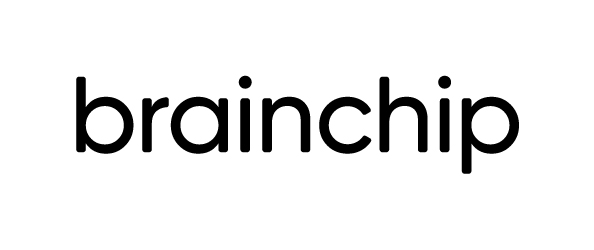BrainChip Empowers Next Generation of Technology Innovators with Launch of the University AI Accelerator Program
Tuesday, August 16, 2022 5:30 PM
Share this Article


 BrainChip's University AI Accelerator Program provides hardware, training, and guidance to students at higher education institutions with existing AI engineering programs. BrainChip's products can be leveraged by students to support projects in any number of novel use cases or to demonstrate AI enablement. Students participating in the program will have access to real-world, event-based technologies offering unparalleled performance and efficiency to advance their learning through graduation and beyond.
BrainChip's University AI Accelerator Program provides hardware, training, and guidance to students at higher education institutions with existing AI engineering programs. BrainChip's products can be leveraged by students to support projects in any number of novel use cases or to demonstrate AI enablement. Students participating in the program will have access to real-world, event-based technologies offering unparalleled performance and efficiency to advance their learning through graduation and beyond.
The Program successfully completed a pilot session at Carnegie Mellon University this past spring semester and will be officially launching with Arizona State University in September. There are five universities and institutes of technology expected to participate in the program during its inaugural academic year. Each program session will include a demonstration and education of a working environment for BrainChip's AKD1000 on a Linux-based system, combining lecture-based teaching methods with hands-on experiential exploration.
"We have incorporated experimentation with BrainChip's Akida development boards in our new graduate-level course, "Neuromorphic Computer Architecture and Processor Design"at Carnegie Mellon University during the Spring 2022 semester,"
said John Paul Shen, Professor, Electrical and Computer Engineering Department at Carnegie Mellon.
"Our students had a great experience in using the Akida development environment and analyzing results from the Akida hardware. We look forward to running and expanding this program in 2023."
Was thinking about the Uni courses and I know this below grant was started sometime in 2020 and complete now I think, but wonder if we may have been involved with ASU back then given the below reference highlight.
Lidar driven project

Haven't dug too deep but believe project could also have morphed into another Neptune offshoot at bottom of post.
Not saying involved but sometimes difficulty with DOD is a project completes then morphs into an extension / evolution but under different title and additional scope.
ABSTRACT: Vehicle gunners need to improve the speed and reliability of threat detection and targetacquisition/engagement. Lidar specifically designed for A) long-range, B) rapid, accurate, andflexible beam-steering, C) detection using laser pulse shapes, D) complementing cameraimaging, E)...
app.dimensions.ai
Grant
(NEPTUNE) Threat Detection & Tracking for Vehicle Gunners
Funder: United States Department of the Navy (DON)
Grant number: N000142012247
Investigators
Ronald Calhoun - Arizona State University
PI
Research organization
Arizona State University, United States
Abstract
ABSTRACT: Vehicle gunners need to improve the speed and reliability of threat detection and targetacquisition/engagement. Lidar specifically designed for A) long-range, B) rapid, accurate, andflexible beam-steering, C) detection using laser pulse shapes, D) complementing cameraimaging, E) tracking objects i.e., the ability to follow moving objects with adaptive scanning,and E) integration with Intelligent Agents -- can form the basis for enhanced protection ofoperators and gunners for military trucks and light tactical vehicles (e.g., JLTV). Imaginesensors / AI will mark regions of the field of view as both important (e.g., object predicted tointersect with vehicle pathway) and which lack sufficient resolution for high qualityclassification. These regions will be adaptively probed with dense point clouds concentratedwhere disambiguation is required in order to fully recognize objects in the field of view.Commercial and capital markets anticipate a tidal wave of change in the automobile andtruck markets and have unleashed torrents of effort and capital to position themselves for thearrival of autonomous vehicles. This new trillion-dollar sector of the economy will be based onseveral key technologies which are coming to fruition at the same time: A) algorithmicdevelopments in artificial intelligence and machine learning, B) AI chips which are afundamental change in the nature of computing hardware, shifting from von Neumannarchitecture to distributed memory and computation mimicking neural structures of the brain
(seefor example research and commercial projects in neuromorphic computing, Brainchips Akida,Intels Loihi, or Graphcore), C) 3D Sensors lidars, radars, and ultrasonic sensors can produce3D point clouds (azimuthal, elevation, and range), providing a new basis for precisionpositioning, object detection, classification, and tracking, and D) the electrification andoptimized coordination of vehicle fleets.In previous work (Neptune 1.0), the ASU group designed a lidar to complement camerabasedimage processing, which we believe will be the work-horse of vehicle sensor suites. Thecamera will mark and hand-off to the lidar regions that are both of high interest and ambiguous.The lidar prototype has: A) 1550 nm wavelength for longer range, B) a MEMS mirror for beamsteeringwhich is flexible enough to scan boundary regions around objects, and C)
an analogdigital converter approach to detection, allowing more advanced utilization of the returningpulse-shape and exploration later of AI-chip neural-net based detections.
A rack-mountedprototype is currently being tested for short-ranges, up to 10 meters in range. Pulse energy ismeeting specifications for long range.
Configurable MEMS mirror scanning is online andworking, and the analog digital converter is working for portions of the full dynamic range.
The US Navy’s Office of Naval Research (ONR) is looking to develop a new class of subminiature radio frequency (RF) signal processor payload for the sea service’s...
www.janes.com
US Navy's Neptune project seeks new RF payloads
by Carlo Munoz May 17, 2021, 14:15 PM
The US Navy’s Office of Naval Research (ONR) is looking to develop a new class of subminiature radio frequency (RF) signal processor payload for the sea service’s...
The US Navy’s Office of Naval Research (ONR) is looking to develop a new class of subminiature radio frequency (RF) signal processor payload for the sea service’s growing arsenal of unmanned platforms, according to a 13 May industry solicitation.
The new RF processing payload system being developed under the ONR programme, dubbed the Neptune Payload Prototype Project, will be designed to “support multiple RF missions with a limited set of hardware, a wideband transceiver capability with self-contained software-defined or reconfigurable hardware-accelerated processing as required”, the Request for Solutions (RFS) notice by the Strategic & Spectrum Missions Advanced Resilient Trusted Systems (S2MARTS) other transactional authority (OTA), stated.
“Candidate component technologies that are available for integration to satisfy ONR’s payload requirement include currently available integrated wideband RF transceiver chipsets, Field-Programmable Gate Array (FPGA), RF Application-Specific Integrated Circuit (RF ASIC), Radio Frequency System-on-Chip (RFSoC), and high-performance microcontrollers,” the solicitation added.
Navy programme officials have set a five-year window for development work on the Neptune payload prototype, at an estimated cost of USD3.7 million over the duration of the effort, according to the RFS. The ONR engineers are open to integration of commercial off-the-shelf (COTS)-based software-defined radio technologies into prototype offerings, given those COTS technologies meet “current high-technology readiness levels (TRL)” as defined by the programme officials, the solicitation stated.
️ shops . Maybe there is a renaissance happening like vinyl and now cassettes.











